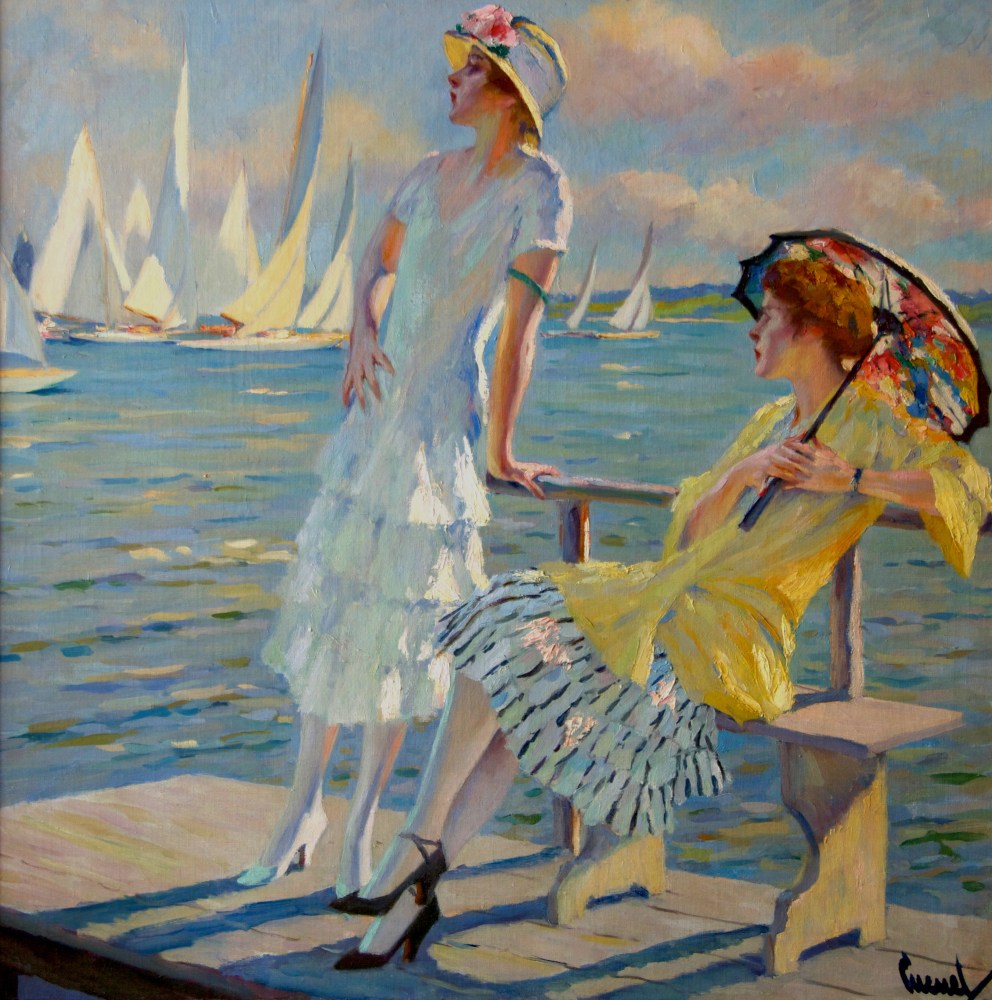Although he was a native of San Francisco, Edward Alfred Cucuel painted in a European style informed by years of study at art academies in France and Germany. Cucuel is known for his Impressionist paintings of female figures and plein air scenes of leisure, but he began his artistic career in a very different medium, as a newspaper illustrator. After enrolling in the San Francisco School of Design at the age of fourteen, Cucuel took a position at The Observer. While Cucuel would continue to contribute illustrations to newspapers at later points in his life, it was clear that he had other artistic aspirations when he left the United States at the age of seventeen to travel to Paris and study at the Académie Julian and the École des Beaux-Arts. Here Cucuel painted under the guidance of Benjamin Jean-Joseph Constant, William Bouguereau, and Jean Leon Gérôme. In 1896, he returned to the United States, working again as a newspaper illustrator, but this time in New York. Cucuel produced a number of notable paintings here, even though stay in New York was brief, about half a year before he moved back to Europe to devote himself to painting. This time he would stay, maintaining a residence on the Continent, for more than forty years to come.
After his move back to Europe, Cucuel settled in Paris, where he painted for two years before uprooting himself again. Cucuel left Paris in order to travel and develop his painting by studying old masterworks in person. Over the coming years, his travels would carry him through France, Italy, and eventually Germany, where he illustrated newspapers again in Berlin. It was in Berlin that Cucuel met his future wife, the painter Clara Lotte von Marcard. Cucuel stayed until 1907, when he moved to Munich. In Munich, Cucuel became involved in a group of artists called the “Scholle,” led by Leo Putz. Putz had significant influence on Cucuel, who returned to his mentor’s residence for many summers to paint with him. By 1913, his paintings had garnered recognition in Paris salons and some of his work was shown at the Art Institute of Chicago. In 1915, Cucuel was honored with a silver medal for the work he submitted to San Francisco’s Panama-Pacific International Exposition. He continued to spend much of his time working in Europe until 1939, when World War II broke out. Forced to leave Germany, Cucuel returned to California and lived in Pasadena until his death in 1954.

